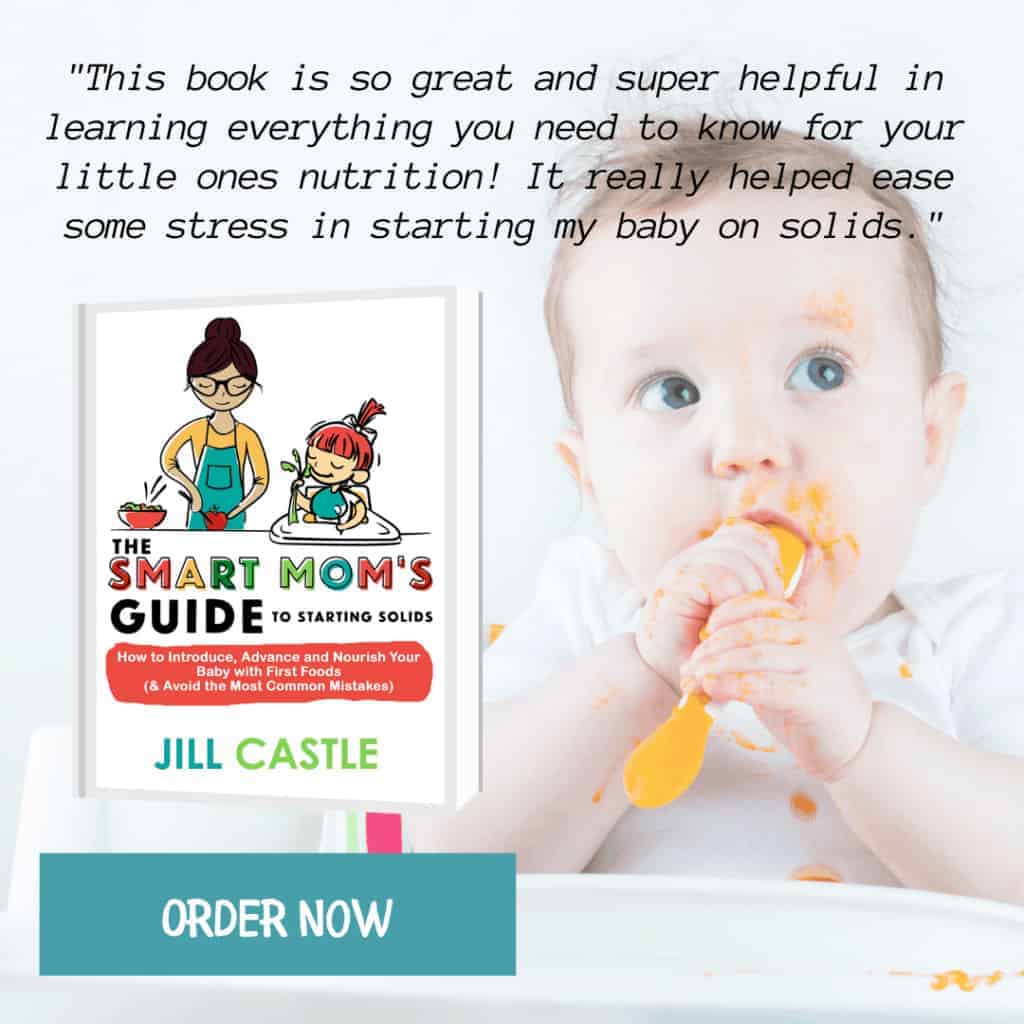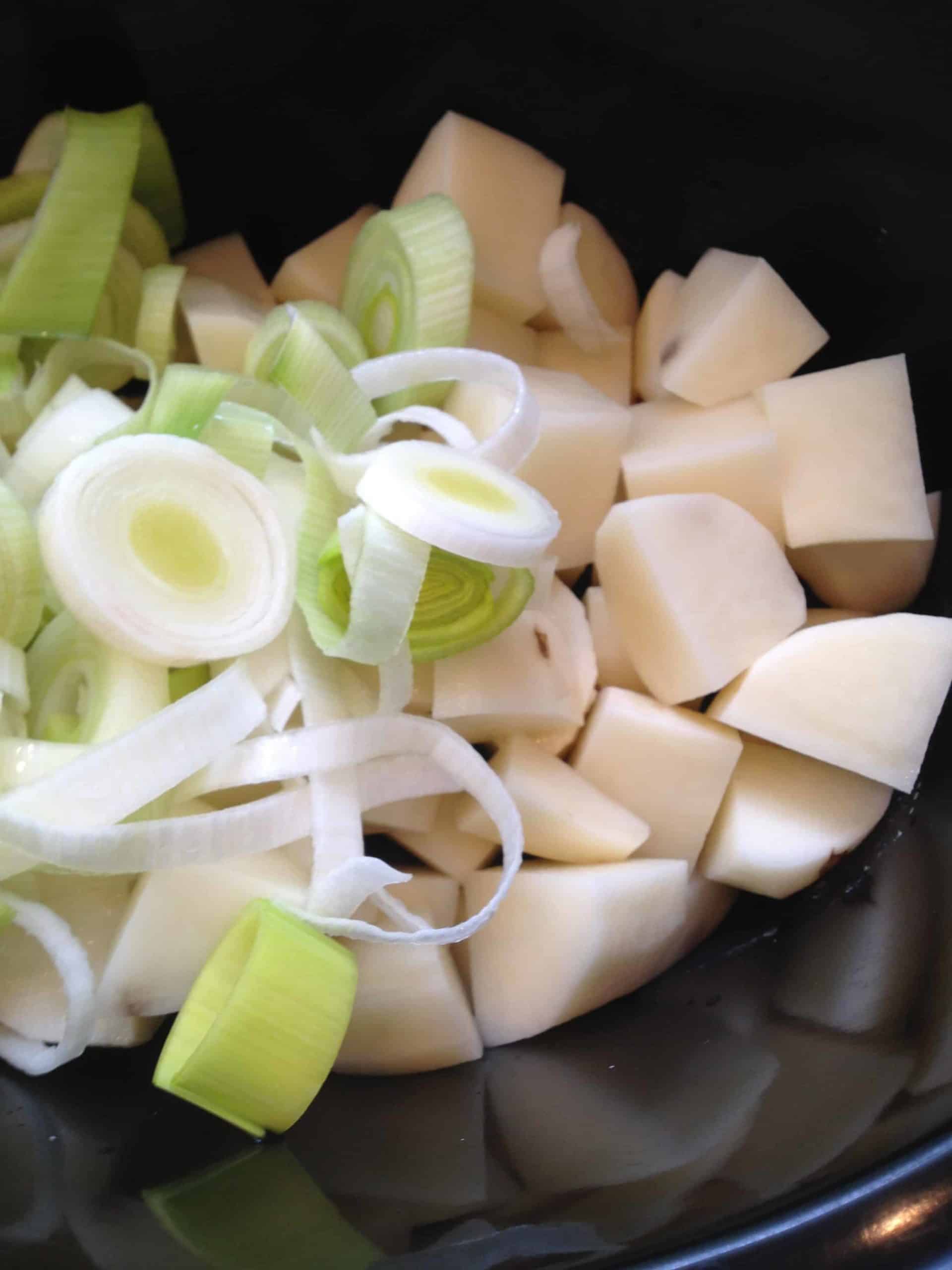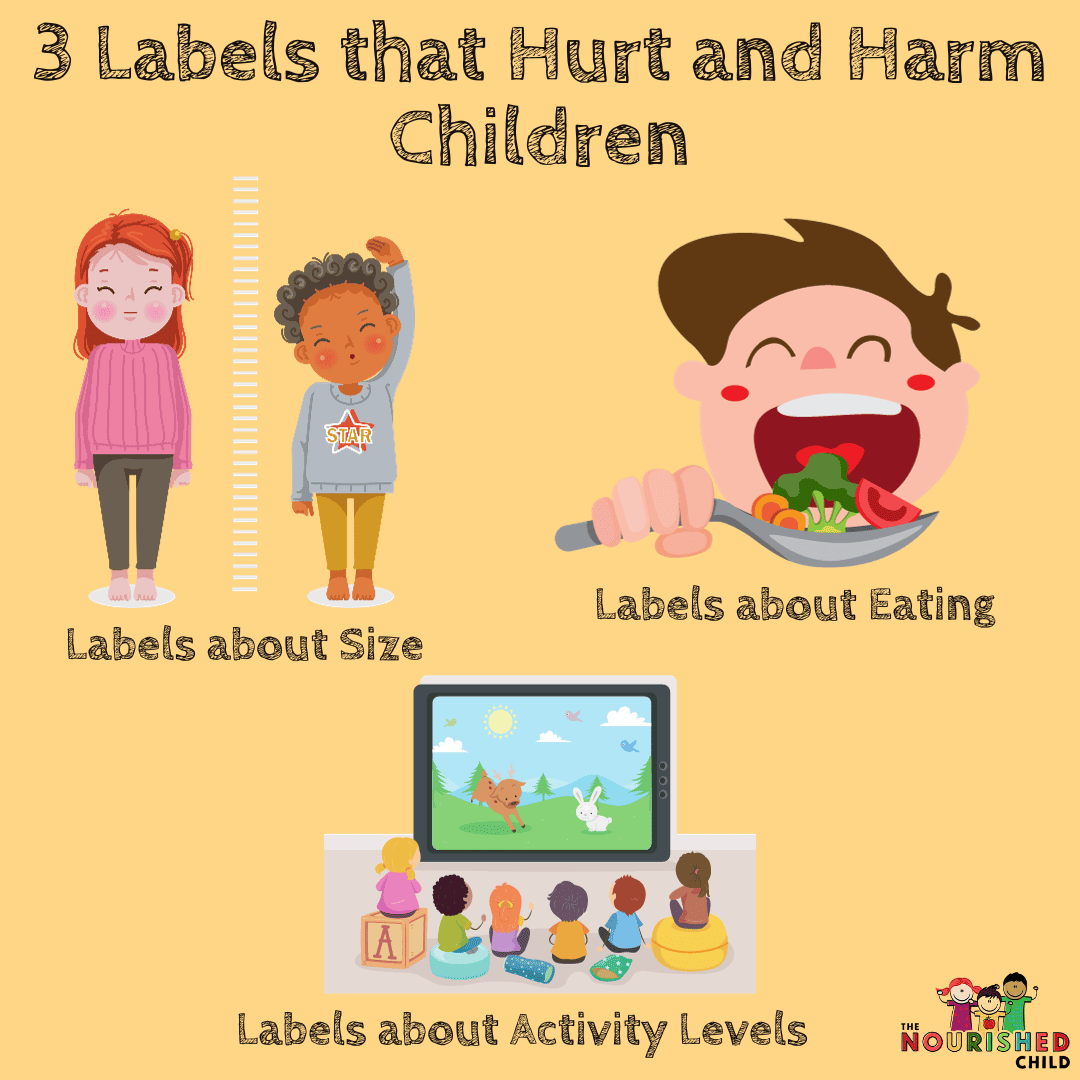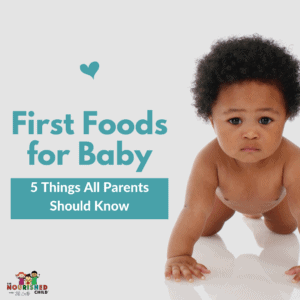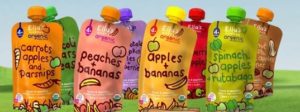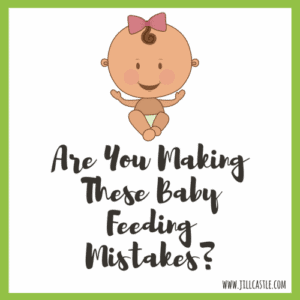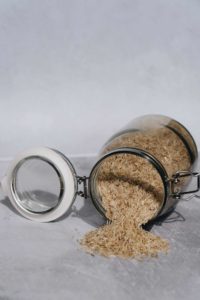How Much Should I Feed My Baby? (Portion Sizes and Guide)
October 26, 2023
How much should I feed my baby? Learn about the importance of starting solids and how much your baby will eat through the process.
One of the most common questions parents ask me about nutrition in their baby’s first year is “How much should I feed my baby?” Especially when it’s time to start babies on solid food.
As a pediatric dietitian, I know your baby’s eating will vary quite a bit in the first year of life. He’ll start with very small amounts of food at the beginning of solid food introduction, around 6 months. But, by a year of age, your baby should be eating mostly family food, served in developmentally-appropriate textures and food portions.
So how do you get there? First, you need to understand that how much your baby eats will depend on two things: His appetite and how old he is.
Older babies eat more food than younger babies. If you’re just starting solids with your baby, read on to learn about the appropriate food portion sizes for your baby, as well as how to watch for your baby’s hunger cues indicating your baby wants more food or wants to stop eating.
You Will Learn:
- Your baby’s unique nutritional needs
- How much to feed your baby
- Your baby’s signs of hunger
- How to focus on responsive feeding and promoting self-regulation with eating
- What a typical day of eating looks like for a 6- to 10-month-old
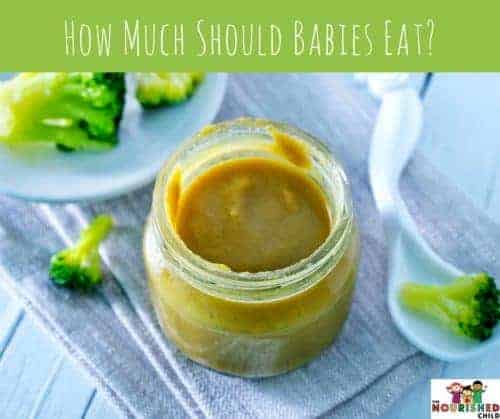
Your Baby’s Needs for Nutrition
It’s always a surprise for parents to hear that babies have higher calorie requirements per pound of body weight compared to toddlers and older children. Most young infants between 0 to 6 months need about 100-120 calories/kg/day, and by one year, around 95-100 calories/kg/day.
After calories, nutrients are very important to the growth and development of your baby. Especially, fat, essential fatty acids like DHA, vitamin D, calcium, and iron. They all play important roles in ensuring your baby’s growth of the brain, body, and bones.
How Much Should Babies Eat?
No baby eats the same amount as another baby. There’s quite a bit of individuality.
How much food your baby should eat isn’t the question to be asking. Rather, you should be focused on your baby’s cues and preserving his inherent ability to know how much to eat.
Thankfully, babies are very skilled at regulating their food consumption, something called self-regulation.
As you can see, during the transition from 6 months to a year, food becomes a bigger contributor to your baby’s energy and nutrient intake for growth and development. Offering nutritious foods is key.
[If your baby refuses to eat, this can indicate illness or other medical issues. Check with your doctor.]
[Read: Baby Changes and Eating: What to Expect]
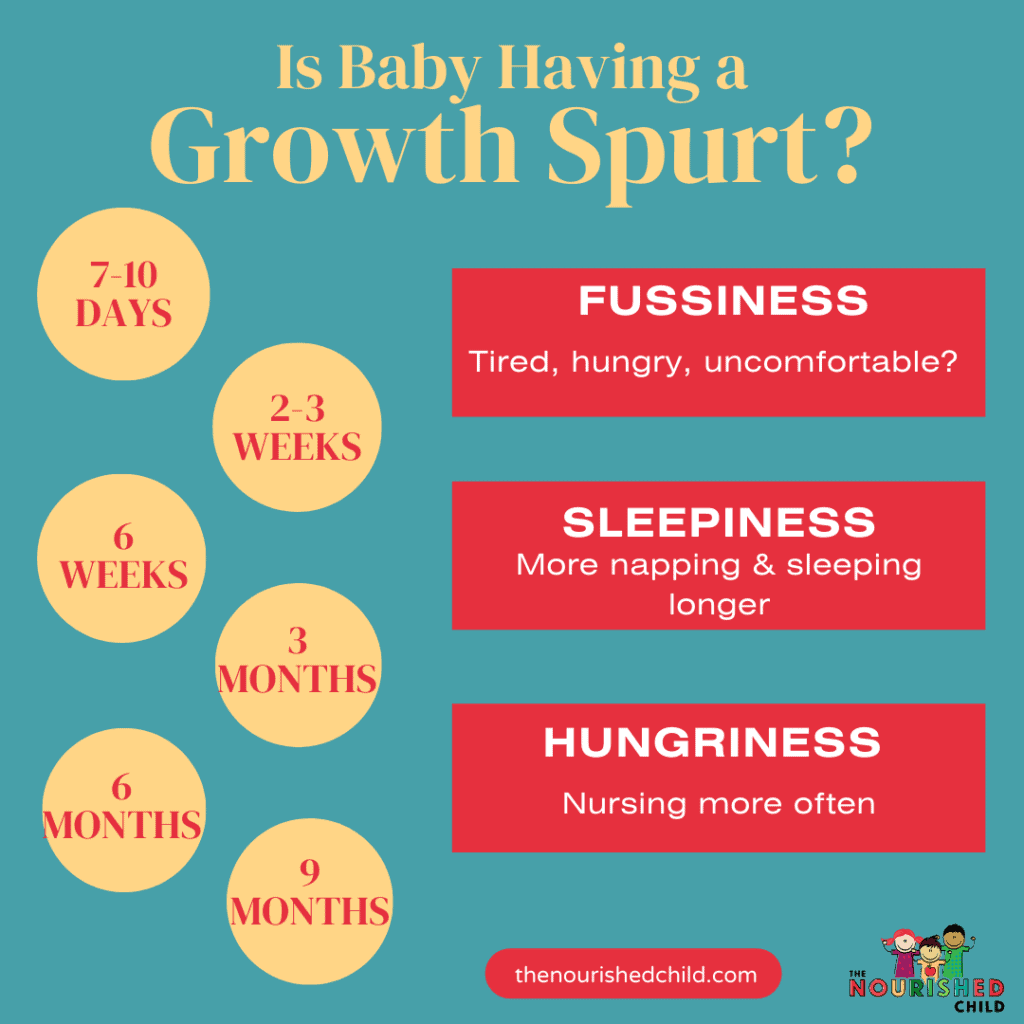
How Much Should My 6-Month-Old Eat?
Despite having high-calorie requirements relative to their size, babies don’t need to eat as much food as you might think. In the first 6 months, all of your baby’s food requirements should come from breastmilk or infant formula feeding.
At 6 months, most babies will start to eat solid foods. However, the amount of real food eaten will be very small.
Most 6-month-olds will do well with a tablespoon or two of puree, like baby cereal, once or twice a day.
(Keep reading for a sample eating plan for 6-8 month-old and 8-10 month-old babies.)
Here are suggested amounts of food per day for a 6-month-old baby, per the American Academy of Pediatrics (AAP):
- 1 – 2 ounces of Grains
- 1 -2 ounces of protein
- 2 – 4 ounces of vegetables
- 2 – 4 ounces of fruit
The purpose of this early stage of baby feeding is simply to introduce flavor and texture to your baby and help them get used to eating from a spoon or self-feeding.
Using a Baby-Led Weaning Approach?
If you are starting with the baby-led weaning (BLW) approach, you’ll skip the spoon and offer whole foods cut into finger-like shapes, while making sure the foods you offer can easily melt or be mashed in your baby’s mouth.
Since there isn’t a lot of actual food consumed in the early stages of BLW, you’ll want to make sure you offer nutrient-rich foods, particularly high in iron, fat, and omega-3 fatty acids like DHA.
Read more about Getting Enough Iron and Baby Led Weaning.
You can also do a mixed or hybrid feeding approach, combining traditional spoon-feeding and baby-led weaning to get the best of both options. I cover this in-depth in my podcast episode, Starting Baby on Solids, Flexibly.

How Much Should an 8-Month-Old Eat?
By the time your baby is 8 months old, they will have already tasted lots of new food. Your baby will also show interest in feeding themself and transition to chopped foods (no more purees as a staple in the diet!).
At this age, it’s typical for your baby to start moving to a feeding schedule where they eat three meals a day of real food, modified in texture to meet his developmental eating skills.
Portion Size for an 8-Month-Old
The following are daily target amounts outlined in my book, Fearless Feeding, for an 8-month-old:
- 2 – 4 ounces of grains
- 2 – 4 ounces of protein-based foods
- 4 – 6 ounces of vegetables
- 4 – 6 ounces of fruit
Because your baby’s body is growing so much in the first year – hello multiple baby growth spurts! – the amounts of food are small at first, but once your baby gets the hang of eating real food, his food quantities will increase, and breastmilk or formula consumption will decrease.
Remarkably, even before your baby can talk, he can give physical signs that indicate he’s still hungry or that he’s done eating, such as crying or turning his head away.
How much should I feed my baby? Click To TweetSigns of Your Baby’s Appetite
| Your Baby May be Hungry if… | Your Baby May be Full if… |
| He fusses or cries.
| He decreases the rate of sucking or stops sucking. |
| She smiles, gazes or coos at you during a feeding. | She spits out the nipple.
|
| She moves her head toward the spoon or bottle.
| She becomes easily distracted or pays more attention to the environment around her. |
| He reaches for or points to food. | He moves his head away from food. |
| Your baby shows excitement when food is offered. | Your baby slows the pace of eating.
|
| She uses sounds, words or signs to indicate hunger. | She cries or shakes her head “no.” |
Your baby’s hunger and fullness cues indicate appetite and are an essential part of the feeding process. If you delay your baby’s meal because it isn’t “time to eat” yet, you may be ignoring a growth spurt and the natural increase of hunger that accompanies it.
Trying to feed your child more when they are signaling to you they’re done has the potential to interfere with this natural ability to self-regulate food consumption. This is called forcing or pressure to eat.
Portion Sizes of Baby Foods and Honoring Appetite Cues
If you want to know portion sizes for a 10-month-old and beyond, you can work from the 8-month-old portions and start with a small amount of food initially, and pay attention to your baby’s appetite cues.
Generally, begin with a tablespoon or two of food. As your baby grows, you may start with larger amounts.
Appetite cues are the most important indicators for offering more food or stopping the feeding session. Small portions are a good guideline of how much food to give to your baby, but they aren’t a definitive meal plan, per se.
Follow your baby’s cues. They’ll govern the ultimate amount of food he or she eats at mealtime.
[Read more about Starter Portions.]
[Watch my video about Toxins in Baby Food!]
Baby Feeding Guide: Sample Day of Eating
The baby feeding chart below summarizes how much food from each food group you might offer your baby throughout the day.
(For toddlers and older children, see the difference in recommendations for portion sizes.)
Note: The emphasis of this chart is on what a day could look like in terms of food. Every baby is different, and each family will proceed with baby food reflecting their food preferences, feeding approach, and cultural values.
All babies should be consuming either breastmilk or formula throughout the first year of life.
Sample Day of Eating for a 6-to-8-Month-Old Baby
| Morning | Breast Milk or infant formula |
| Breakfast | 2 to 4 tablespoons of iron-fortified cereal mixed with breast milk or formula 2 to 3 tablespoons fruit or vegetable 1 egg yolk mashed with breast milk or formula |
| Midmorning | Breast milk or infant formula |
| Lunch | Breast milk or infant formula |
| Late Afternoon | 1 to 4 tablespoons of iron-fortified cereal mixed with breast milk or formula 2 to 3 tablespoons fruit or vegetable 1/2 cup plain yogurt |
| Dinner | Breast milk or formula 2 to 3 tablespoons of meat or meat alternative 2 tablespoons of cereal or 1/2 slice of bread (8 months) 2 to 3 tablespoons fruit or vegetable |
| Before Bed | breast milk or infant formula |
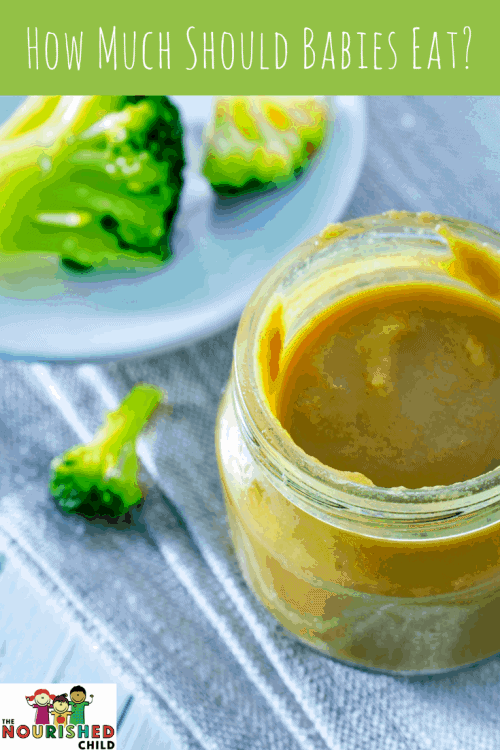
Sample Day of Eating for an 8-to-12-Month-Old Baby
| Morning | Breast milk or infant formula |
| Breakfast | 4 to 6 tablespoons iron-fortified cereal mixed with breast milk or infant formula 2 to 4 tablespoons of fruit or vegetable 1 egg yolk mashed with breast milk or formula |
| Midmorning | Breast milk or infant formula |
| Lunch | Breast milk or infant formula 2 to 4 tablespoons meat or meat alternative 3 to 4 tablespoons of pasta 2 to 4 tablespoons fruit or vegetable |
| Late Afternoon | 2 to 4 tablespoons fruit 1/2 cup plain yogurt |
| Dinner | Breast milk or infant formula 2 to 4 tablespoons of meat or meat alternative 2 crackers 2 to 4 tablespoons of vegetable |
| Before Bed | Breast milk or formula |
*According to the AAP, from 8-12 months, your baby will need about 750-900 calories per day, and 400-500 calories should come from breast milk or formula (about 24oz or 720ml a day).
Making Homemade Baby Food
If you buy baby food or make your own baby food, use these conversions to help you figure out how much you need:
2.5 oz = 5 tbsp
4 oz = 8 tbsp
6 oz = 12 tbsp
General Guidelines for Feeding Your Baby
- When starting, offer your child an appropriate starter portion based on their age from most food groups. This could be a tablespoon of food from each category. Try to give your baby a variety of foods.
- Let your child enjoy eating and watch for his appetite cues. If he’s still hungry, offer more food. If he’s showing signs of fullness, end the meal.
- Be flexible. Sometimes your baby will want to eat more or less than she is “supposed to eat,” but that doesn’t necessarily mean you need to worry.
Your baby’s hunger and appetite will generally depend on his size, activity level, and stage of growth. When babies are in a growth spurt, they are typically hungrier. Most importantly, remember that every baby is different. And every day can be different!
Babies are good at figuring out how much to eat and when to stop, provided you are responsive to their cues.
Frequently Asked Questions
There are always more questions! I’ve tried to answer the most common ones I hear.
If you have another question, let me know and I’ll try to answer!
What if my baby doesn’t eat all the food I’ve made for her?
Don’t worry. Trust that your baby understands her body’s appetite signals. Don’t ever force your baby to finish a meal or bottle.
What if my baby is still hungry after I’ve fed her enough food for the day?
Your baby may be in a growth spurt, which means energy needs are higher. This can look like a bigger appetite than normal.
Again, don’t worry! Your baby may be letting you know he’s growing and needs to eat a bit more.
How often should babies eat?
Babies eat every two to three hours throughout the day and night.
As they grow, their tummies can hold more food, so they may be able to last three hours between eating sessions, but this will vary based on the individual child.
What foods should I avoid giving to my baby?
Honey or corn syrup are no-nos in the first year of life due to the risk of botulism poisoning. This goes for any raw foods, too, like sushi or raw milk.
No cow’s milk until one year of age, however, milk baked in food products (e.g., a muffin), and plain yogurt at 6 months is okay.
Avoid sweets as much as possible.
Can my baby eat peanut butter?
Yes! Read How to Introduce Peanuts to Your Baby for more information.
What about food allergies? Should I avoid certain foods?
The advice about food allergies has changed. Early introduction in the first year of life is the name of the game, for all allergens. This is considered a step toward food allergy prevention.
When can my baby have finger foods?
If your baby is starting solids with the baby-led weaning approach, you be offering finger foods at the beginning. However, if you’re starting food with the spoon, at around 8-to-9-months, you’ll begin to offer finger foods, as that’s when the pincer grasp emerges.
Need More Help with Baby Feeding?
I wrote a complete guide to starting solids to help you navigate nutrition, food amounts, baby led weaning, food allergy prevention and more.
No fluff.
Just straight-forward guidelines to keep you on track during this rapidly changing phase of feeding.
Check out my book, The Smart Mom’s Guide to Starting Solids. Or, read The Ultimate Guide to Baby’s Nutrition in the First Year.
References:
Feeding Guide from the Women Infants and Children (WIC) program.
Check out this site for more information on portion sizes for your 1-4 year old child.
Originally published in February 2018 | Updated September 2020

